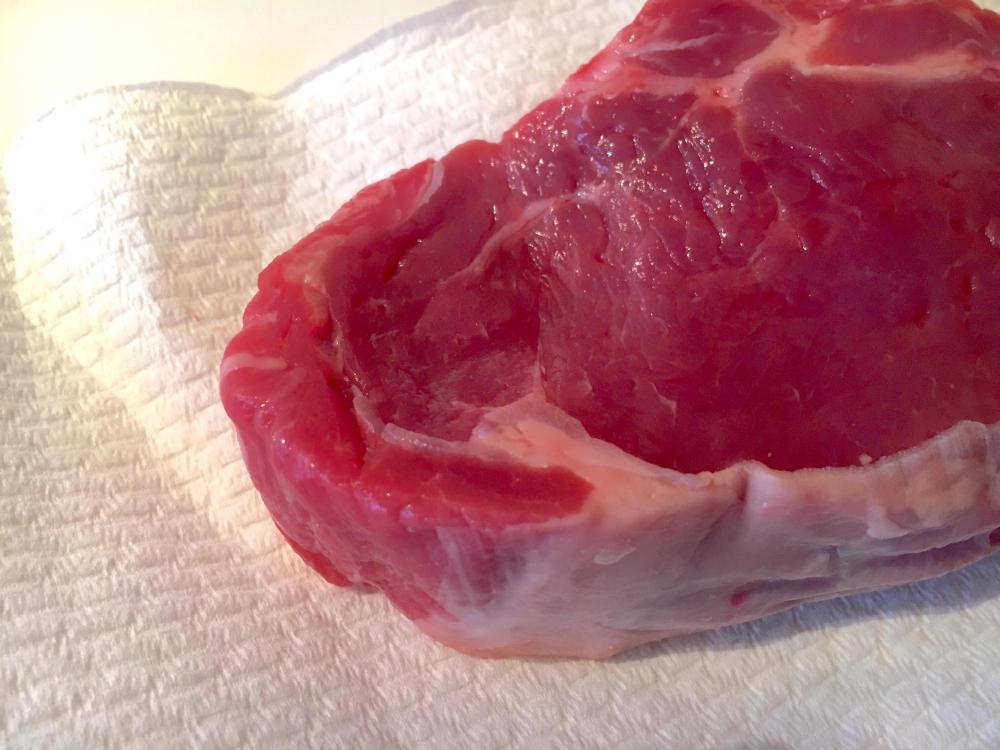-
Posts
67 -
Joined
-
Last visited
Recent Profile Visitors
3,631 profile views
-
Recently cooked whole bone-in lamb shoulder sous vide for 8 hours @ 80°C. The results were like a typical braise. More interestingly, I weighed the different components after cooking for future reference. Here is the breakdown: Before cooking: 2.1 kg lamb shoulder – whole, bone-in, untrimmed After cooking: 621 g liquid 435 g bones and fat 1044 g meat Almost precisely half of the total weight was meat. Hopefully this will be helpful if you are trying to calculate portions. As an aside to this: we've been cooking our tough cuts (sous vide) whole, without any trimming at all, and removing fat and bones after cooking. It is so much easier and faster than trimming everything beforehand. The excess fat comes off in large pieces and connective tissue peels away cleanly. Lamb shanks, for instance, are tedious to trim before cooking but easily cleaned up after they come out of the bag. It's luxurious to have big, clean pieces of shank meat although some may prefer on-the-bone presentation. We have tried this with pork shoulder, too, and the unwanted fat is easily removed after cooking with lovely hunks of tender meat remaining for slicing, dicing or shredding.
-
I want to make mint spheres for use in a hot sauce. (Think lamb with mint caviar.) Can this be done? Is it possible to make heat-stable spheres? What is the most effective way to extract mint flavour from the raw leaves? I don't want the resulting spheres to contain alcohol as it will be served to children. My cursory investigations indicate that glycerol may be an alternative—has anyone done this?
-
I've done lamb shanks for 5 hours @ 87°C / 188°F and it had a very similar texture to a traditional braise. The benefit is that the size of the shank didn't matter so much and they stayed in shape so that they were easy to remove the outside fat and silverskin for a nicer presentation. I'm curious about the differences of times and temperatures above 80°C / 176°F? For example, does 10 hours @ 82°C give the same result as 5 hours @ 87°C? I'll have to try it.
-
Is it possible to make the skin crispy after it has been cooked sous vide?
-
My partner and I did come up with some other interesting things to do. A light chocolate mousse. We’re going to try and infuse lychee into watermelon. Perhaps a foam to top our cocktails. The siphoned soufflé is less appealing to us now; there are lots of impracticalities which I hadn't originally contemplated.
-
bhsimon changed their profile photo
-
Anyone tried this? I'm trying to think of something novel to do for my friends at an upcoming birthday weekend. We are renting a house in the Hunter Valley (Australian wine region) and food is a major component of our weekend. Last time I did fizzy fruit—the grapes and oranges were awesome and everyone enjoyed the unique experience. I want to do something quirky like that again. The whipping siphon is easy to transport so I'm interested in using it. The siphoned soufflé in Modernist Cuisine, volume 4 page 297, has a chocolate variation that does not require propylene glycol alginate or maltodextrin (I don't have those things in my pantry, yet). That looks like it might be a good one to try. Anyone done that and have some advice for me before I dive in?
-
I did fry after the sous vide as well (‘frying prior to, and after’). I didn't include any pictures of the meat after the post-cooking fry, but let me say that my crust was mighty serious. The point of my post was to share the observation that pre-frying will plump up the meat and make the surfaces more evenly flat as well as retain the shape when vacuum packed. Beyond just the crust, there are benefits to deep frying prior to sous vide. Frying before and after is better for the crust, too. You can put the meat in the freezer for 30 minutes prior to frying to reduce the depth of over-cooked meat below the crust. (Think cryo-frying.) After cooking, the meat needs to be fried for a shorter time, to simply refresh the crust rather than create it from scratch.
-
The oil temperature was 180°C for the lighter-coloured steak on the right and 200°C for the darker one on the left. I am curious about the possible plumping effects in hot water. As you noted, there will be no chance for malliard reactions at 100°C, but if we can get some of those plumping effects than it would be easier to pan fry the flatter surface. This may make it possible to get an even colouration using a pan-fry method in place of deep frying. Next time I purchase some lovely veal chops to make côtes de veau dijonnaise, I will run an experiment and report the results.
-
Besides the health concerns, deep frying steak is the best way to get an even colour and crust on steak. In my most recent experiment, I tried the technique of deep frying prior to, and after, cooking the steak sous vide. In the past, I had only fried the meat after it had been cooked. The meat was veal chops. As can often be the case, the meat was mishandled somewhere along the way. The obvious signs of this were indentations in the surface. This kind of thing makes it tricky to pan fry and get even colour. This soft meat is also tricky to vacuum seal as it can often be further compressed and misshapen in the process. I was delighted to observe that a short 45 seconds in hot oil fixed both of these issues! I didn't expect that. Nice. The meat plumped up and that indentation was gone. It also held its shape nicely when vacuum packed. Time and temperature matters. The difference can be just a few seconds or degrees. In the next picture, the time was the same but the oil was 20°C hotter for the steak on the left and the crust is noticeably darker. My next experiment will try 30 seconds at 200°C before and after. The goal is to keep the crust as thin as possible. I hadn't anticipated the secondary benefits of deep frying prior to sous vide. The plumping of the meat and slight firmness made them easy to package and present. I am curious whether anyone has observed this. I am also curious if it would it work in hot water, rather than oil.
-
ChicagoTodd and I developed an online system for something like this at www.modernistcookingdb.com. We haven't worked on it for a while, but there is potential there to update it to accomodate some of these suggestions.
-
Slightly sideline to this topic, but potentially very useful. I've done a few tests filtering low-quality vodka with impressive results. Using an expired Brita water filter, we pass inexpensive vodka through the filter 3 times. Good results can also be achieve after 2 passes. There is little gain with 4 passes. This process markedly improves the perceived quality of the vodka, and as been preferred by all of the 10+ participants in my triangle discrimination tests. This might be useful for those wanting to experiment with the rapid infusion process without going through their expensive vodka. Once a preferred formula and method has been derived, it could be applied to the top-shelf vodka.
-

Whippers/Whipping Siphons: Brands/Models, Cartridges?
bhsimon replied to a topic in Kitchen Consumer
CO2, as stated. -
Here in Australia the Mosa CO2 cartridges are much cheaper than the iSi branded ones or the Liss ones. Does anyone have experience using these Mosa chargers in an iSi Gourmet Whip? I've found a few sites saying they are compatible, but these are also sites that are selling them. I just thought it would be prudent to check if anyone has direct experience with using the Mosa in and iSi. Thank you.
-
I'm looking to make a list of iconic noodle dishes. Here's my start: – Ramen – Pad Thai – Pho – Laksa Expand at will. (No need to be distracted by my use of the word 'iconic'. Let it mean what you want: popular, well-known, whatever.)
-
huiray, I think you've got bogged down in my illustrative example, and I wish I'd never used it. I think it's time to get off this tangent. I do appreciate your examples, though, thank you.




